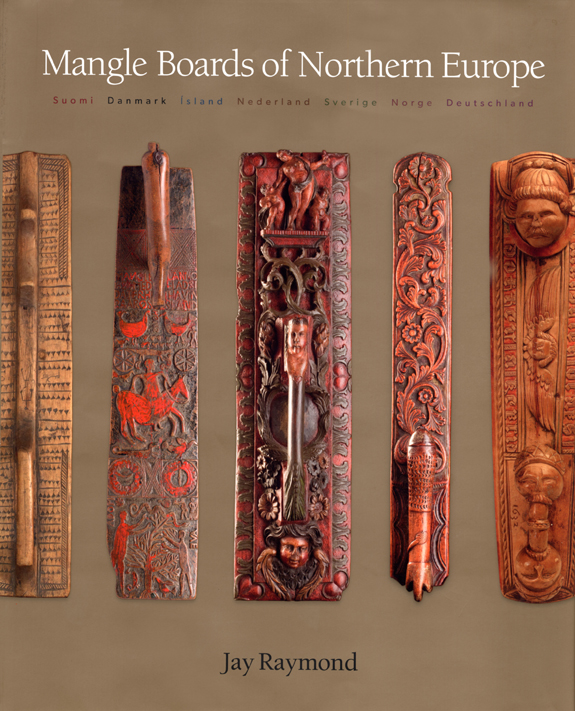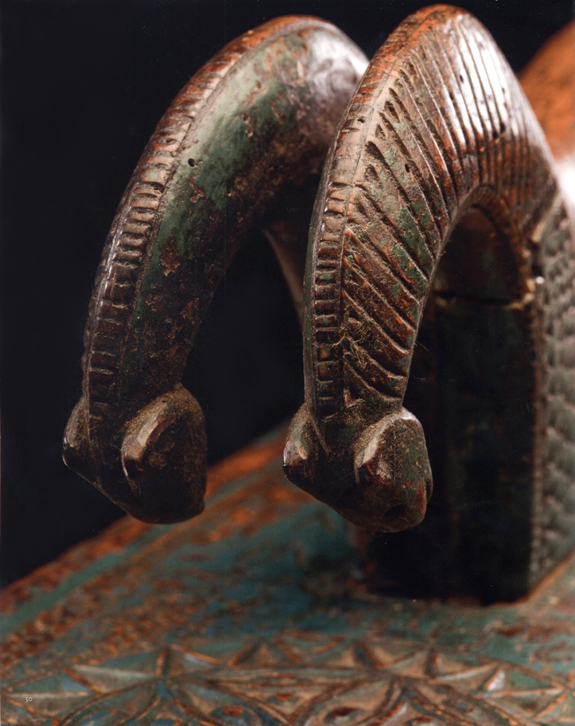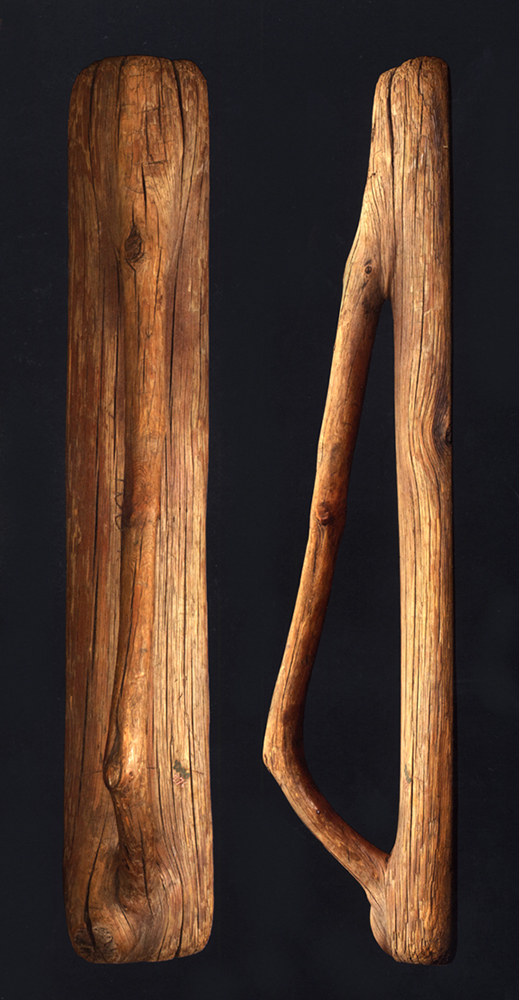
Review by Anne Kugielsky
Mangle Boards of Northern Europe: Suomi, Danmark, Island, Nederland, Sverige, Norge, Deutschland, by Jay Raymond; Streamline Press, www.streamlinedirons.com; 2015, 288 pages; hardcover; $185.
Exquisitely designed and photographed, every aspect of this prodigious book is a visual feast. To say nothing of the content of the book, the design and production of this volume that encompasses 268 mangle boards from 18 European museums and 4 private collections, are amazing.
Stepping back to the subject of the book, perhaps a definition of a mangle board is required: from the book, “A plank of wood used in conjunction with a wooden rolling pin to smooth wrinkles from linen. These carved objects, made for a practical purpose, span 300 years and nearly a dozen countries… They are folk art. They use symbolism.”
Art historian and author of Mangle Boards of Northern Europe, Jay Raymond has applied his rigorous training and experience as student and teacher at the Barnes Foundation to a hitherto unheralded subject, and has, as he says in the project description of his book, “made an interesting subject of what was obscure.” He has indeed.
Handcrafted by both professional and naïve carvers in wood, the bottom of the mangle board is flat, smooth and undecorated. It is what touches the linen. The top of the board is often decoratively carved and some are painted. The top faces the user. The boards explored in Mangle Boards of Northern Europe are filled with carvings and paintings of vegetation, animals, biblical scenes, mythological creatures and a myriad of other motifs and designs.

Detail of the handle of a manglebraetter made in Denmark, dated 1792. As is typical of Danish mangle boards, the handle depicts a horse (in this case a double-headed horse), the handle is a flat-sided horse with geometric pattern.
Mangle boards have handles or knobs, which can be shaped like animals or decorated with scenes like the rest of the board, or in some Icelandic or Norwegian boards, the handle runs down the entire center of the board, “akin to a fence built on the centerline of the board.”
The earliest board included in the book is from 1554; it is dated by its inscription, “Where the wash is so well done that it makes a man’s pants nice and whiter than a woman’s scarf. In the name of our Lord, 1554.” Inscriptions reveal the names of original owners or makers, serve as narratives or instruct or celebrate events or just clean, well-pressed laundry.
Perhaps to readers’ surprise (certainly to this reader at least), mangle boards can be found in museums throughout the world; the Metropolitan Museum in New York City has ten Dutch / Frisian boards. For this volume, however, Raymond draws on mangle boards that were made in the seven countries listed: Netherlands, Denmark, Finland, Sweden, Iceland, Norway and Germany. Raymond tells us that mangle boards — called by a variety of names — were also made in Austria, Hungary, Czech Republic, Slovakia, Poland, Lithuania, Latvia, Estonia and Russia.

Raymond says of this board, “More so than the boards of other countries, the mangle boards of Finland were made by household members … [and] are almost always primitive in character. This board dated 1634 “is not carved but cut as a whole from the tree.” He says whether manipulated or discovered, the board was selected to be a mangle board. “It is the act of selection … that convey[s] the intelligence of this maker: clever, graceful and frugal.”
The book is organized by country with an essay that gives a short introduction and traces the history of the country, gives the list of museums and collections found there, and estimates how many of that country’s boards survive today. The author then discusses distinguishing characteristics of boards, what makes them unique vis-à-vis the boards of other countries. The core of the essay is the aesthetic analysis.
The essay portion is followed by the individual boards of that country. Date of board, if possible, origin, description and comparison of the boards to others of its type and the aesthetic characteristics of the board are given for each; then the detailed photographs of the full board and closeups of design, text or carvings of the board follow.
A massive undertaking of scholarship and research that took years, this is an incredibly beautiful book, the images and text are woven together to form a fascinating narrative. The images seem to be impressed onto the pages, the photography is flawless; the text informs, entertains and enlightens.
Raymond succeeds in what he states at the outset is his goal — to survey the aesthetics of mangle boards and focus on the visual. To examine the shapes of the boards and the shapes within the boards, to illuminate the qualities that are expressed, to “feel the life of mostly common people, whose lives are not in history books and are lost to us except in this way.”
Mangle Boards of Northern Europe introduces a niche for collectors, scholars, museums and art lovers. It is a niche filled with a folk art that has been to date unexplored, but richly deserving of the depth and fine quality of this investigation.
Read article and see more images inside July 10, 2015 E-edition

